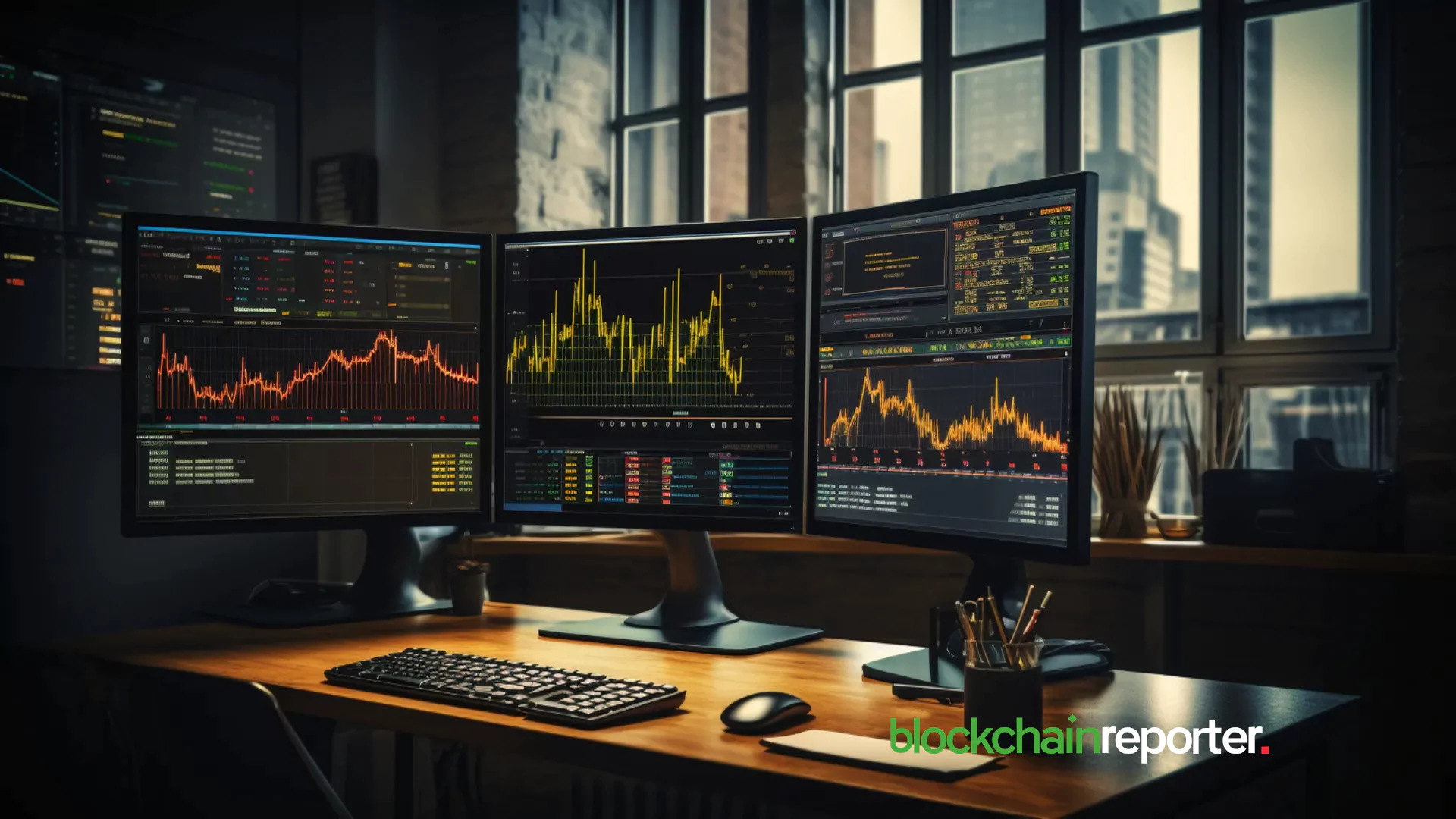What Tokenized Stocks Mean and How They Work
0
0

Introduction
Cryptocurrency market is relatively new and small when compared to stock markets. This drives many crypto traders to resort to shares trading. However, there are certain limitations, due to which stock trading does not suit everyone. For example, you can trade only for a few hours of the day. You need to purchase at least one full share, which may set you back financially if you are a small trader. Blockchain brings a practical solution to these problems. The solution is tokenized stocks.
What Are Tokenized Stocks?
Tokenized stocks are digital versions of regular stocks but differ in that these are issued on a digital ledger, or a blockchain. They bring convenience and flexibility to traders who can carry out trades anytime they want. Anyone can gain exposure to real-world equities without owning them actually. To trade tokenized stocks, there is no need any traditional stock exchange or brokerage account.
Most of the tokenized stocks have 1:1 correlation with the actual stock they represent. This becomes possible because the developer of the tokenized version of the stock has actual shares in their custody. Nevertheless, in some cases, tokenized stocks may track prices in some other way such as using financial instruments or price feeds.
Types of Tokenizes Stocks
Asset-Based Tokens
As is evident from the term itself, these tokens are actually backed by real shares in the custody of an institution. Such tokens trade on a price that constantly correlates with the market price of the share represented by the token. Licensed financial audit firms and external accounting companies perform regular audits to verify whether the tokens have real backing of the shares claimed by the developers.
Synthetic Tokens
These tokens do not have actual backing of the shares. Instead, they rely on derivatives, blockchain oracles or smart contracts. Oracles bring the real share’s price from the outer world. Remember that blockchain networks cannot communicate with the outer world on their own. Oracles do this job for blockchains. On the other hand, smart contracts are programs that run a blockchain network. Smart contracts gain data from oracles and keep the token’s price on the level of share’s actual price.
How Tokenized Stocks Work
Accumulation of Supply
The process of tokenization begins with the arrangement of supply on the part of licensed financial institutions. These entities buy shares of a publicly traded stock as a backing for the token to be issued later. Custodian institutions are required to comply with securities regulations in their jurisdictions and maintain secure storage for the assets. They generally conduct regular audits and publish proof of reserves to verify that the number of tokens in circulation matches the number of shares held.
Minting
When the required supply has been secured, the issuers mint digital tokens on a blockchain and issues them to the traders officially. If the tokens are asset-based, their price matches the underlying stock. If they are synthetic, blockchain oracles like Chainlink fetch the real-time data from the stock market to tether the token price accordingly.
Trading and Burning
Since tokenized stocks exist on blockchains, you can trade them just like any other digital token. Centralized as well as decentralized exchanges offer the trading feature for the token. You can buy, sell, swap open short or long positions in the futures option of the token. Furthermore, the developers also keep burning features in the smart contracts. This helps keep the price of the tokens tethered with the underlying stock.
Merits of Tokenized Stocks
24/7 Trading
The first and foremost advantage of tokenized stocks is their availability round the clock. Stock market opens for 6-7 hours, so it does not match everyone’s working hours. Digital tokens are on blockchain which always remains accessible. 24/7 availability come in handy all the more when you get some news that can cause ripples in the prices, but the stock market is still closed. The expected pump or dump may reflect in the price of the tokenized stock even before it shows on the real market.
Fractional Ownership
Just like you trade $BTC on exchanges, you can trade fractional amount of the token. If 1 $BTC costs more than $80,000, you obviously do not need to buy a whole coin. You can invest any minimum account allowed by your exchange. Therefore, fractional ownership is a great benefit of the tokenized stocks.
Global Accessibility
Regional barriers may hinder trading your favourite stocks. It is difficult to find brokerage firms. Blockchain-based tokens are accessible globally. No extensive paperwork is needed. You do not have to rely on the local regulations. The only obstacle that can annoy you is the DeFi regulations, but they can easily by bypassed.
Transaction Time
Your transaction in the traditional market take annoyingly long time. Processing time frustrates you if you need money urgently. Also, there are 2 bank holidays that may further delay your transactions. These frustrations are non-existent on blockchain networks. In at most ten minutes, your funds are in your custody whether you want them in a digital wallet or in your bank account.
DeFi Integration
Being on blockchain networks, the tokenized assets can be used for yield farming, liquidity pool, or even as a collateral to get loans. In other words, DeFi integration is a bonus feature enjoyed by the tokenized stocks.
Risks and Challenges
Tokenized stocks can make it much more convenient to access and trade shares of traditional companies using blockchain technology, but there are important risks to keep in mind.
Regulatory Environment
The rules and regulations for these digital assets are still developing and vary greatly from one country to another, which affects how tokenized stocks are issued, traded, and who can invest in them. While holding a tokenized stock gives you exposure to the price movements of the underlying asset, it generally does not provide the same rights as owning the real stock, such as voting or participating in shareholder meetings.
Technical Glitches
These digital tokens depend on custodians, issuers, and the reliability of smart contracts to function properly, so things like bugs, poor management, or even low trading activity can undermine their stability and trustworthiness.
Low Liquidity
Since the market for tokenized stocks remains relatively small, liquidity can be an issue, making it difficult to buy or sell large amounts without delay. That is why it’s essential to carefully research your options, choose reputable platforms, and understand the relevant regulations in your area before getting involved in trading tokenized assets.
Conclusion
Tokenized stocks bridge the gap between traditional finance and blockchain, offering investors 24/7 access, fractional ownership, faster settlement, and global reach. While they unlock exciting new opportunities, they also come with regulatory uncertainty, technical dependencies, and liquidity challenges. As this emerging market continues to evolve, investors should approach tokenized stocks with careful research and choose trustworthy platforms to manage their exposure responsibly.
Short Summary
Tokenized stocks are blockchain-based versions of traditional shares, allowing 24/7 trading, fractional ownership, and global access. They work through custodians who hold real shares or synthetic models powered by oracles and smart contracts. While they offer faster transactions and DeFi integration, risks include unclear regulations, technical failures, and low liquidity. Investors should research platforms carefully before trading tokenized assets.
0
0
 Manage all your crypto, NFT and DeFi from one place
Manage all your crypto, NFT and DeFi from one placeSecurely connect the portfolio you’re using to start.




